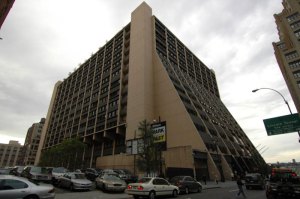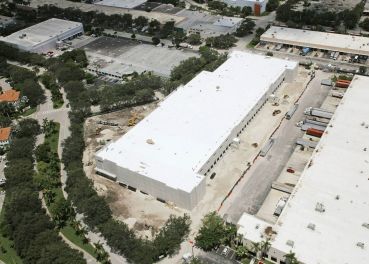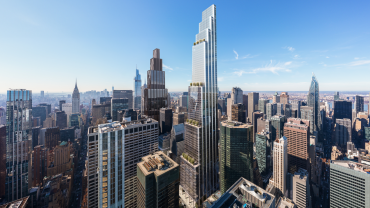
The rail yards on Manhattan’s far West Side, like the developers’ dreams and mayoral agendas they inspire, slouch wearily toward the Hudson. For a necropolis of transit systems past (the Hudson River Railroad, the New York Central, the High Line), the Hudson Yards offer up eternal-and seemingly eternally deferred-promise, the heady rush of unclaimed surface area.
Mayor Bloomberg, the latest heir to the yards’ unwieldy inheritance, tried to lure both the Jets and the 2012 Olympics to the expanse of metallic flatlands. His failure mattered less than the rhetorical grandiosity of the gesture, which eased the way for mock-up visions of a vertical glass-and-steel far West Side.
The area’s rezoning and a concurrent push to extend the No. 7 subway line produced a spasm of glittery architectural renderings, each carted out by a big-name developer, anointed with potential financing schemes and greased with revolving door-dizzy municipal insiders.
The ultimate plan, a $1 billion deal struck by the Related Companies, entails erecting what amounts to a 26-acre deck atop the rail yards, a giant platform for staging the drama of high-rise development. The idea for building atop the yards is nothing new: Since the 1930s, there have been dreams of factories and warehouses rising above the ghostly terrain. But the closest anyone has ever come was a developer known as Richard Ravitch, the future M.T.A. head and now lieutenant governor.
In 1967, he built the Westyard Distribution Center, the concrete hulk that straddles the Penn Station rails, a study in Death-Star Brutalism.
The building was either a generation too late or several too early.
The building was either a generation too late or several too early. Constructed for factory use, the elephantine structure was a remnant of an era already fast departing: the days when manufacturing pumped blood through New York’s arteries and transmitted oxygen through its ports. By the time the police-state windows and bulbous floor plans were converted for office use in 1991, the building was still decades away from any realization of midtown’s fabled future shift west.
And though one of the oft-cited maxims of the shiny future Hudson Yards was that it would draw a veritable media corridor, the media have largely absconded south. Of the West 33rd Street building’s media tenants, only the Associated Press remains, with the New York Daily News, WNET and U.S. News & World Report gone or soon to be. Condé Nast, rumored to have considered the neighborhood in its bid for a new home, has transferred its attentions to the Financial District.
In perhaps the most costly comedy of errant timing, the 1.7 million-square-foot building itself was purchased by the young landlord Broadway Partners, which happened to be on something of a swaggering buying spree at the flush heights of 2007. By then, Mr. Ravitch was long out of the picture, and Broadway bought 450 West 33rd from a group led by investor Joseph Chetrit. Glimmering with boom-time sheen, the rattly Death Star traded for $664 million.
Meanwhile, star tenant Mort Zuckerman, publisher of the Daily News and U.S. News & World Report, a man with hundreds of thousands of square feet at stake (his newspaper would take an entire floor), had come onboard in the mid-1990s, a time when a developed far West Side was barely a glint in Mayor Giuliani’s eye and rents reflected its industrial past.
Whatever the Daily News was worth, it would soon be gone anyway.
The Related Companies’ 99-year lease for the Hudson Yards is hinged to a set of wary market conditions. The deal doesn’t spring into motion until, for instance, midtown office vacancies fall below 11 percent and Manhattan apartment prices hit an average of $1,200 a square foot.
The project that is Manhattan is made and unmade by unseen forces-the ebbs and tides of markets, the axes of political and financial alliances. Timing is everything. But the West Side rails are also unlike any development in Manhattan’s recent history. Hudson Yards’ wide-open vastness has engendered decades’ worth of vertiginous visions-a tomorrowland from a graveyard, a whir of glass offices and condos from a freight station-while simultaneously collapsing those visions into the lightless gravity of development stalemate.
The rail yards represent the bounds of Manhattan, the limits to which the city draws ever nearer, but they also represent the waterfront, or, at least, a memory of the waterfront as something more than a shiny backdrop for tourists and luxury condominiums.
Before we misplaced it behind highways and buildings, the water shipped out cargo of another New York, a New York of tangible exports and nostalgia-tinged optimism-which is maybe why we so like the idea of it but never seem quite certain about the way back.
egeminder@observer.com


